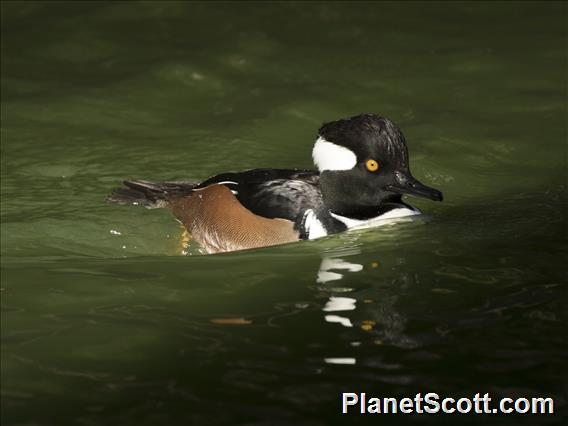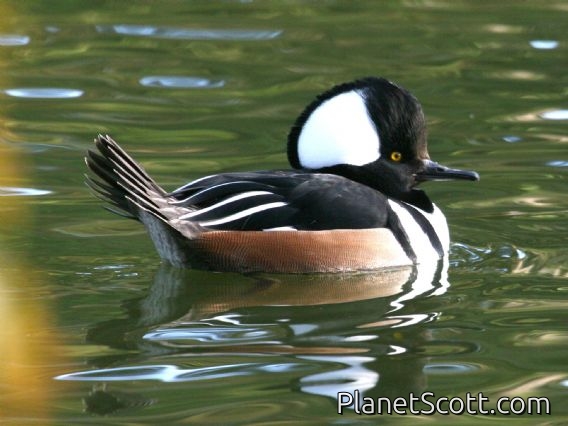Hooded Merganser (Lophodytes cucullatus)

Hooded Merganser (Lophodytes cucullatus)

Hooded Merganser (Lophodytes cucullatus) Male

Hooded Merganser (Lophodytes cucullatus) Male

Hooded Merganser (Lophodytes cucullatus)




×





Hooded Merganser (Lophodytes cucullatus)

Hooded Merganser (Lophodytes cucullatus) Male

Hooded Merganser (Lophodytes cucullatus) Male

Hooded Merganser (Lophodytes cucullatus)
About Hooded Merganser (Lophodytes cucullatus)
- Kingdom: Animals
- Phylum: Chordates
- Class: Birds
- Order: Anseriformes
- Family: Swans, Geese, and Ducks
The hooded merganser is a species of fish-eating duck in the subfamily Anatinae. It is the only extant species in the genus Lophodytes. The genus name derives from the Greek language: lophos meaning 'crest', and dutes meaning 'diver'. The bird is striking in appearance; both sexes have crests that they can raise or lower, and the breeding plumage of the male is handsomely patterned and coloured. The hooded merganser has a sawbill but is not classified as a typical merganser.
Source: Wikipedia
Visits
-
2007-01-15
Golden Gate Park - Lloyd Lake, United States of America -
2007-02-04
Golden Gate Park - Lloyd Lake, United States of America -
2007-12-15
Golden Gate Park - Lloyd Lake, United States of America -
2009-01-12
Fox River - Dundee, United States of America -
-
2013-12-07
Golden Gate Park - San Francisco Botanical Garden, United States of America -
2014-02-16
Golden Gate Park - Lloyd Lake, United States of America -
2014-12-08
Golden Gate Park - San Francisco Botanical Garden, United States of America -
-
-
-






